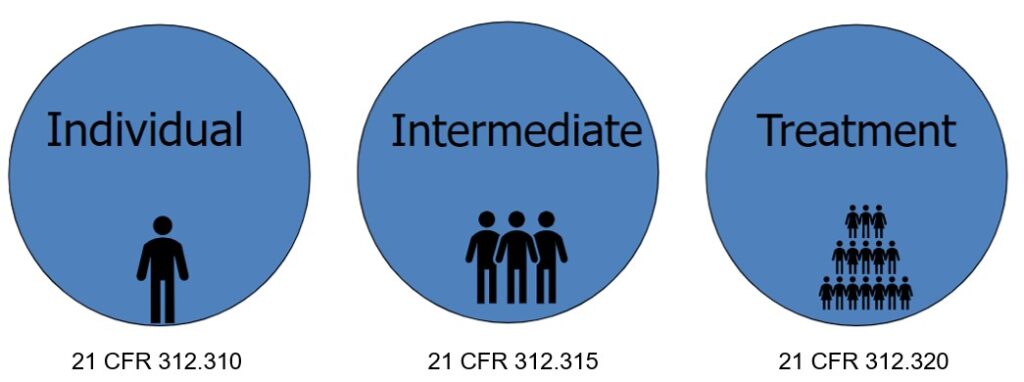
History and Background
Expanded Access Programs (EAP) are governed by 21 CFR 312, Subpart I and are also referred to as “compassionate use.” They are designed to allow use of investigational drugs outside a clinical trial for subjects who do not meet the requirements of active running trial(s). There are 3 types of EAP: individual (21 CFR 312.310), intermediate (21 CFR 312.315) and treatment (21 CFR 312.320).
In 2016, the 21st Century Cures Act amended FD&C Act to add a requirement for public availability of EAP policy upon first initiation of Phase 2/3 trial. Contents of an EAP policy include: contact information for the manufacturer or distributor, procedures for making EAP requests, general criteria the manufacturer will use to evaluate EAP requests, length of time the manufacturer will need to acknowledge receipt of EAP request, hyperlink to clinical trial record(s) with information about the EAP.
Benefits of EAP
- EAP can provide access to patients with serious/life-threatening diseases who have no other alternatives, and who may be willing to accept greater risk. They may provide patients a measure of autonomy over their own health care decision where options are severely limited.
- EAP (especially a treatment IND) can be a foothold into the marketplace for Sponsors.
- EAP rely on the IND statutory framework.
Barriers of EAP
- Risk/benefit has not been established for the investigational drug through the drug approval process. Anecdotal evidence of overwhelming efficacy may hold up only in a very small subset of patients, and toxicities that increase suffering and/or hasten death may occur in a larger population than is initially seen in a small trial or under EAP.
- Adverse events (AE) identified during an EAP must be included in the overall safety profile of the investigational drug. Since EAP are much less controlled than a traditional trial, AE can be numerous and damaging.
- Unrestricted access to EAP can slow enrollment in controlled trials which slows the collection of meaningful safety and efficacy data.
- Submission of an IND is required.
- Manufacturer drug availability can be affected by EAP enrollment.
Next Steps
If you are considering the submission of an EAP IND to FDA, contact AO Regulatory Consulting. We can clearly advise you on the options, help you decide on the best IND submission strategy, and assist with development of your EAP policy.
